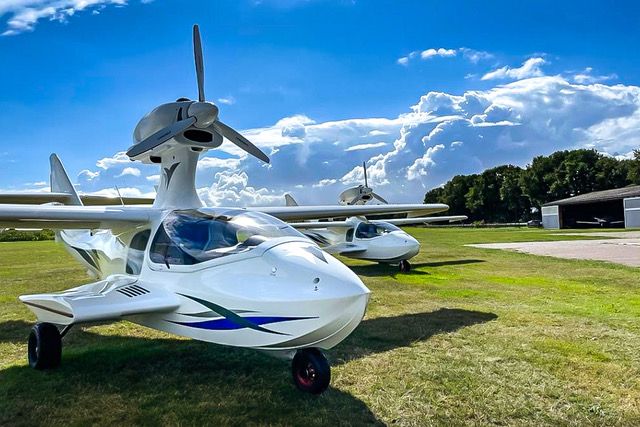Dornier Seawings announced on Wednesday that it has acquired the Flywhale aircraft project from Germany-based Uniplanes GmbH. The deal covers all intellectual property and production assets associated with the project including design data, drawings and manuals along with the toolings and molds required for serial production. According to Dornier, the deal was official as of Jan. 1, 2022.
“The Flywhale fits very well into our product portfolio given its flying boat configuration and proven design features such as corrosion-free composites, high wings and engine as well as sponsons,” said Dornier Seawings CEO Amy Pan. “Our mission is to revive the Dornier flying boat tradition with advanced technology to provide our customers with the unique experience of superior mobility that combines water, land and air operation.”
Dornier plans to produce and market the Flywhale design as the DS-2C by Dornier Seawings. The two-seat, amphibious aircraft has a top cruise speed of 220 km/h (119 knots), 1,000-km (540-NM) range and maximum takeoff weight of 650 kg (1,433 pounds). The company says it intends to use the DS-2C as a research platform for its newly launched DS-2C-X-eVTOL amphibious jet project.




































Looks like it would be a bit harder to fly than the icon because of the high engine location pushing the nose over. I do like the prop out front vs. the old Lake sea planes. They lost prop power because of engine air flow shading. This one looks like it will not have that problem.
All sea planes are fun. But I especially like flying the hull type. 😉
I remember taking a few classes in flying the Lake Amphibian, which was required before dual. (which I never got to do because the plane seemed to always be down for maintenance) The thing that stuck in my mind was the caution that because adding power in the Lake pushed the nose down, any approach to landing you made, in the Lake, you absolutely had to commit to. No go-arounds down low. I wonder if in this aircraft, since the prop is pulling rather than pushing, that things might be different, and that you could perform a go-around in this aircraft, down low.
This is a false since that the added engine power shoves the nose down. Yes it is a factor but as you add power you should be countering the thrust vector with added yoke back pressure. I have both Commercial single and multiengine seaplane rating and have flown both of the Lakes, and many float planes. Flying on and off water is not like take off and landing on runways.
I wish them luck in their new endeavor. But they gotta change the name. No one is going to proudly say they plunked down a quarter-mil on a FlyWhale. I cannot get outta my head a large whale with wings.
They’re way ahead of you:
“Dornier plans to produce and market the Flywhale design as the DS-2C by Dornier Seawings.”
The Airbus Balooga, large jet aircraft that carried large loads seems to do well with the name.
Except that the name is Beluga, not Balooga.